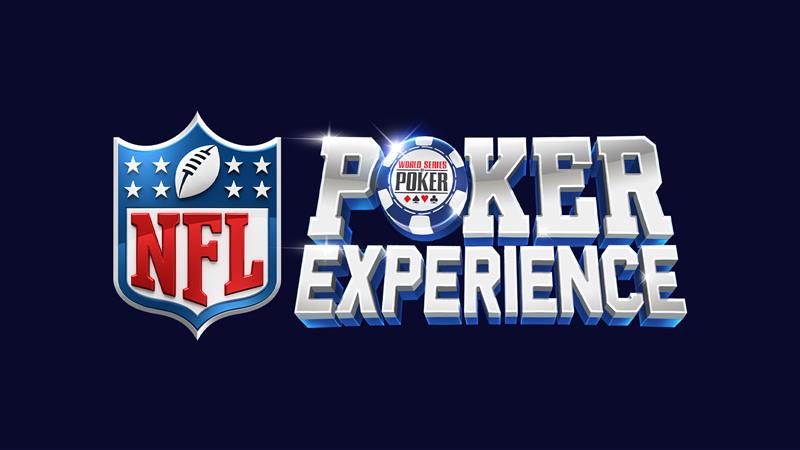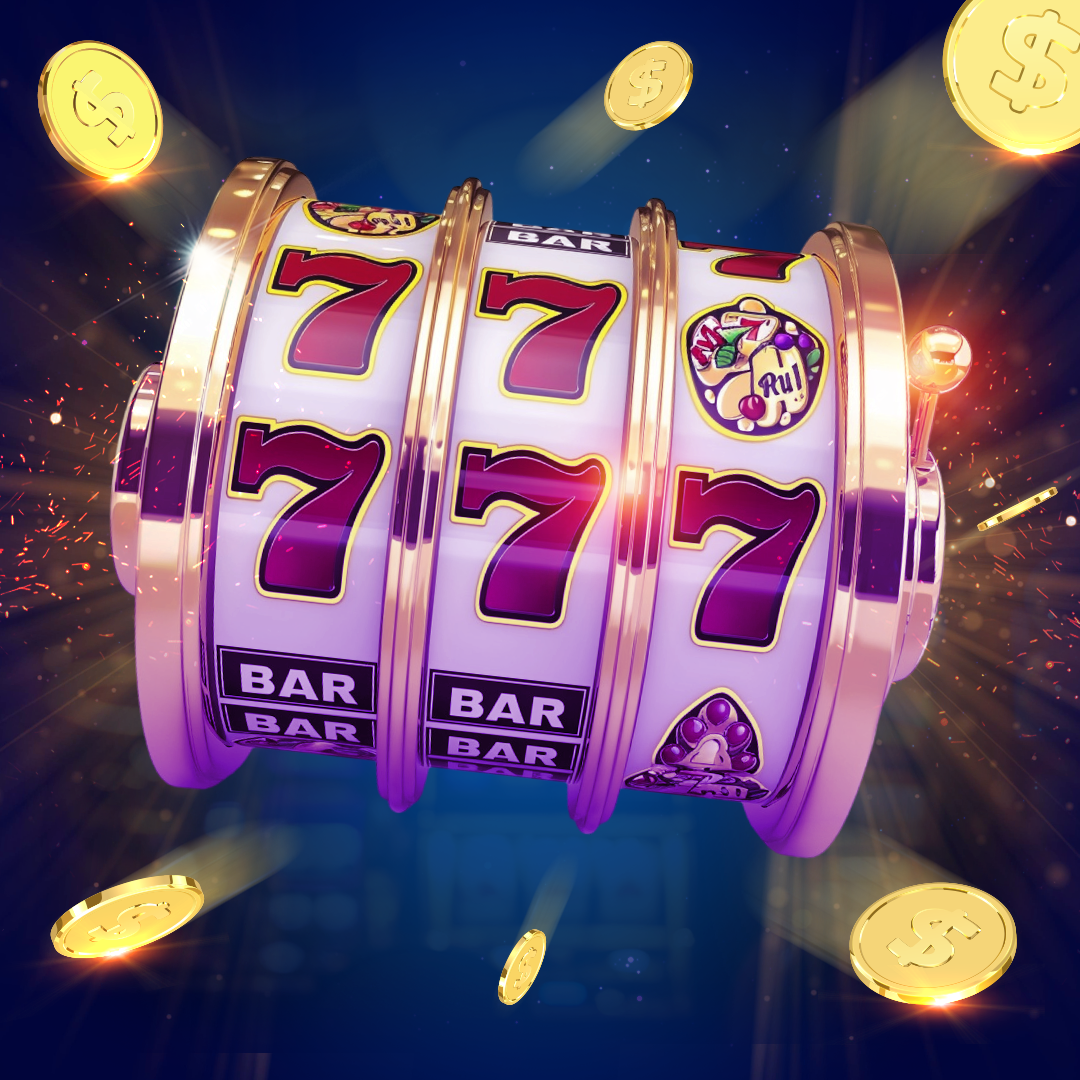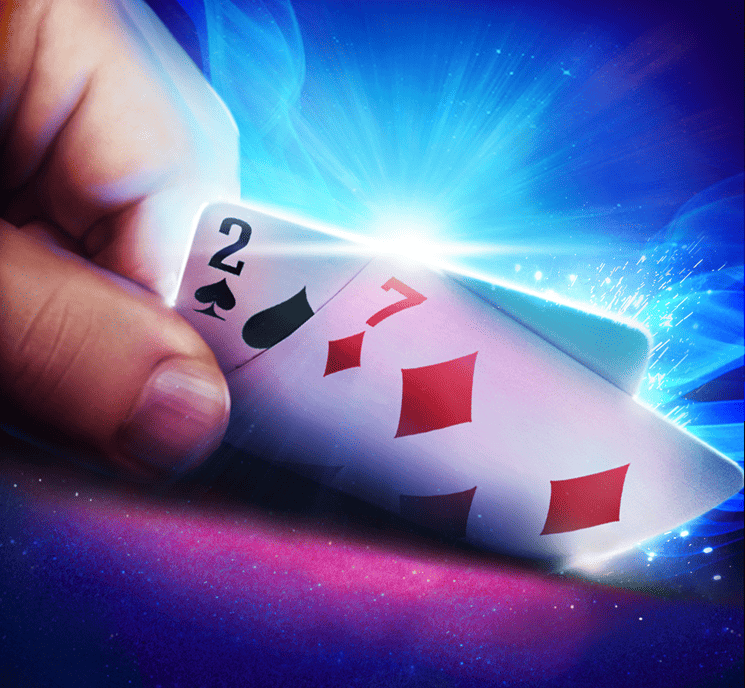The Objective of Omaha Poker
We can only show you how to play Omaha if you know the why. The why in Omaha poker is to win pots. It’s that simple. You can either show the best hand and scoop the pot, or you can force everyone else to fold.
We’ll tell you how to do both of those things as we move through the rest of this guide. Before that, it’s important to note that there are two ways to play Omaha poker online.
The most popular variant is commonly referred to as Omaha or Pot Limit Omaha (PLO). Technically, we should call it Omaha High because it’s a variant where the highest-ranked hand wins a showdown.
The other Omaha variant is known as Hi/Lo. In Hi/Lo, 50% of the pot goes to the best high hand, while the other 50% goes to the best low hand. We’re pointing out this difference now because Omaha poker rules do vary depending on the game you’re playing.
However, even in situations where Omaha poker hands differ in value, the objective remains the same. You win pots by having the best five-card hand at a showdown or by making everyone else fold.
Omaha Poker Hand Rankings
start with four hole cards rather than two. This gives you more possible hand combinations, which is important because it increases the average value of hands at showdowns.
By that, we mean you typically need stronger hands to win Omaha showdowns than Hold ’em showdowns.
It’s hard to get exact answers because of all the possible variables. Despite that, people have attempted to determine the average winning hand in Hold ’em and Omaha. This is what their analysis shows:
В·В В В В В В The most common winning hand at showdown in Hold ’em is one pair (approximately 43% of the time).
В·В В В В В В The most common winning hand at a showdown in Omaha poker games is a full house (approximately 37% of the time).
Those statistics are taken from various simulations, so they may not be totally reliable. They do, however, reinforce the point that you typically need a stronger hand to win a showdown in Omaha than you do in Hold ’em.
We’ll build on this point when we talk about Omaha poker strategy. To move this discussion forward, the next logical step is to show you the poker hand rankings for Omaha.
| Rank | Hand | Example |
|---|---|---|
| 1 | Royal flush | AвҷҰ KвҷҰ QвҷҰ JвҷҰ 10вҷҰ |
| 2 | Straight flush | 4вҷҘ 5вҷҘ 6вҷҘ 7вҷҘ 8вҷҘ |
| 3 | Four-of-a-kind (quads) | KвҷҰ KвҷҘ Kвҷ KвҷЈ 10вҷ |
| 4 | Full house (full boat) | Aвҷ AвҷҘ QвҷҰ QвҷҘ QвҷЈ |
| 5 | Flush | 6вҷҘ 8вҷҘ 10вҷҘ 2вҷҘ JвҷҘ |
| 6 | Straight | 6вҷ 7вҷЈ 8вҷҘ 9вҷҘ 10вҷҰ |
| 7 | Three-of-a-kind (set/trips) | Jвҷ JвҷЈ JвҷҰ 6вҷҘ 8вҷЈ |
| 8 | Two pair | 7вҷ 7вҷҘ 10вҷЈ 10вҷҰ AвҷЈ |
| 9 | One pair | AвҷЈ AвҷҘ 7вҷ 3вҷҘ 10вҷҰ |
| 10 | High card | AвҷЈ 8вҷ 3вҷҘ 7вҷҘ Jвҷ |
*The hand rankings listed above are for Omaha High (aka PLO) and the high half of the pot in Omaha Hi/Lo.
The Two-Plus-Three Rule in Omaha: An Example
Here’s a quick example of the two-plus-three rule in Omaha:
В·В В В В В В Player 1 has 4вҷ 5вҷ 8вҷҘ 9вҷҘ
В·В В В В В В Player 2 has Jвҷ QвҷЈ KвҷЈ AвҷҰ
В·В В В В В В The board = 2вҷ 8вҷ 9вҷ Kвҷ 10вҷҰ
Who has a flush in this hand?
If you said both players, you’re thinking like a Hold ’em player, and you’re wrong. There are four spades on the board, and Player 2 holds the Js, so they’ve got five spades. We know from the ranking of poker hands that five suited cards make a flush.
However, in this example, Player 2 doesn’t have a flush because of the two-plus-three rule. Player 2 can only use three community cards and two hole cards. So, let’s say you opted to use the Jsвҷ and AвҷҰ. That would give them four spades, which isn’t enough for a flush.
In contrast, Player 1 has two spades in their hand (4вҷ 5вҷ ). Combined with three community cards (8вҷ 9вҷ Kвҷ ), that gives Player 1 five spades for a flush. So, in this example, only Player 1 has a flush. That’s how Omaha’s two-plus-three rule works.
Betting Rounds in Omaha
When everyone has their cards, play starts. Five community cards are dealt over the course of three streets: the flop, the turn, and the river. Betting takes place before each street is dealt, which means there are four rounds:
В·В В В В В В Pre-flop betting round
В·В В В В В В The flop betting round
В·В В В В В В The turn betting round
В·В В В В В В The river betting round
Omaha poker hands can end at any point. That point is when a single player remains active, i.e., everyone folds except for a single player.
Hands progress from one round to the next when two or more players remain active. Finally, hands that reach a showdown are separated using the hand ranking table we outlined in the previous section.
Pot Limit Betting Rules
it games when you play Omaha poker online. However, in almost all situations, Omaha is a Pot Limit game.
This means the amount you can bet or raise is limited by the size of the pot. That’s an easy concept to grasp if you’re the first person to bet. For example, if there’s $10 in the pot and you’re the first player to bet, the most you can bet is $10.
Things get trickier when it comes to raising. In Pot Limit Games, raises are determined by the amount required to call and the size of the pot. That means the amount you can raise is determined by two variables:
The cost of calling the most recent bet + the size of the pot once you’ve called the most recent bet. Here’s an example:
В·В В В В В В The pot = $10
В·В В В В В В Player A bets $10
Player B can raise $30 in this situation because:
В·В В В В В В There is $20 in the pot when the action reaches Player B.
В·В В В В В В The most recent bet is $10, so Player B has to call this.
В·В В В В В В $20 in the pot + $10 to call = $30
В·В В В В В В That means Player B can raise $30.
That’s how to calculate the maximum bet or raise in Pot Limit Omaha games.
The Flow of Play: An Example Hand
Let’s put the Omaha poker rules we’ve just discussed into an example. We’ll use a cash game for this example, but hands play out the same way in Omaha poker tournaments.
Table Set-Up
В·В В В В В В Format: Cash game
В·В В В В В В Betting Structure: Pot Limit
В·В В В В В В Number of Players: 6
В·В В В В В В Stakes: $1/$2
The Blinds and Button
This is the initial round of action. Two players post the blinds (small and big) to get the round started. After that, each player receives four hole cards dealt face down.
В·В В В В В В Player 1 posts the $2 big blind
В·В В В В В В Player 2
В·В В В В В В Player 3
В·В В В В В В Player 4
В·В В В В В В Player 5 has the button
В·В В В В В В Player 6 posts the $1 small blind
Pre-Flop Betting Round
This is the second round of action. At this point, the only money in the pot is from the two blinds. Play starts with the player sitting immediately to the left of the person who posted the big blind.
In this example, Player 1 posted the big blind, which means Player 2 acts first. The action moves clockwise around the table, and the last player to act is always on the button (or the player closest to it). In this example, Player 5 is on the button.
Action:
Money in the Pot = $3
В·В В В В В В Player 2 acts first and folds
В·В В В В В В Player 3 raises to $6 with AвҷҰ JвҷЈ 9вҷҰ 8вҷЈ
В·В В В В В В Player 4 folds
В·В В В В В В Player 5 calls with KвҷЈ QвҷҰ JвҷҘ 10вҷҘ
В·В В В В В В Player 6 folds
В·В В В В В В Player 1 folds
The Flop Betting Round
Once the pre-flop betting round is over and at least two players have matched the last biggest bet, a flop is dealt. These are the first three community cards dealt as a set face-up in the middle of the table.
After the flop has been dealt, the first player sitting to the left of the small blind acts first, and play moves clockwise. The remaining player on or closest to the button closes the action.
Action:
Money in the Pot = $15
The flop: QвҷЈ 10вҷ 4вҷҘ
В·В В В В В В Player 3 acts first and bets $10
В·В В В В В В Player 5 calls
The Turn Betting Round
Once the flop betting round is over and at least two players remain in the hand, a fourth community card is dealt. That card is called the turn.
As before, the first player sitting to the left of the small blind acts first, and play moves clockwise around to the button (or the player closest to it).В
Action:
Money in the Pot = $35
The Flop + Turn Card: QвҷЈ 10вҷ 4вҷҘ KвҷҘ
В·В В В В В В Player 3 acts first and bets $30
В·В В В В В В Player 5 calls
The River Betting Round
The final betting round is known as the river. If two or more players are active, a fifth and final community card is dealt face-up. That card is known as the river.
Play proceeds clockwise from the player sitting closest to the left of the small blind. The button (or player closest to it) closes the action.
Action:
Money in the Pot = $95
The Flop + Turn + River Card: QвҷЈ 10вҷ 4вҷҘ KвҷҘ 2вҷҘ
В·В В В В В В Player 3 acts first and bets $40
В·В В В В В В Player 5 raises to $120
В·В В В В В В Player 3 calls
Showdown
If two or more players match the last biggest bet during the river betting round, a showdown takes place. At this point, all remaining players must reveal their cards.
As per the rules of Omaha, players must use exactly two (and only two) hole cards in conjunction with the board to make a ranked hand. In this example, Player 3 makes a straight and Player 5 makes a flush.
В·В В В В В В Player 3 has a straight: AвҷҰ KвҷҘ QвҷЈ JвҷЈ 10вҷ
В·В В В В В В Player 5 has a flush: KвҷҘ JвҷҘ 10вҷҘ 4вҷҘ 2вҷҘ
Result
The player with the best hand wins the entire pot. In the event that two or more players have a hand with the same ranking, the pot is split evenly.
В·В В В В В В Player 5 wins $335 with a flush
The Differences Between Omaha and Texas Hold 'em
Now you know how to play Omaha poker, let’s quickly recap the rules by comparing them to the ones used in Texas Hold ’em.
| Category | Omaha | Texas HoldвҖҷem |
|---|---|---|
| Number of Hole Cards | 4 | 2 |
| Number of Community Cards | 5 | 5 |
| Number of Hole Cards that Must be Used | 2 | 0, 1, or 2 |
| Best-Ranked Hand | Royal Flush | Royal Flush |
Omaha Variants
We mentioned earlier that there are two main types of Omaha. The one you’ll see most often is Omaha High, aka Pot Limit Omaha (PLO). The other is called Omaha Hi/Lo or, if you want to use its full name, Omaha 8-or-Better (Omaha 8).
Both games use the same fundamental structure. Everyone receives four hole cards, and two must be used in conjunction with the board to make a five-card hand. The main difference between PLO and Omaha 8 is the way hands are ranked.
Omaha Hi/Lo Poker Hands
We said earlier that it’s a split pot game. That means a high hand wins half the pot, and a low hand wins the other half. This doesn’t always happen. For example, if someone forces everyone else to fold, they win the entire pot.
Similarly, if no one has a qualifying low hand, the person with the best high hand wins 100% of the pot. A qualifying low hand is an 8-low or better. To understand what that means, we need to define a low hand.
Lowball poker hands are defined by their highest value card. So, the aim in these games is to have a hand that consists of five low-value cards. Flushes and straights don’t count against your hand according to these Omaha poker rules.
Therefore, because aces are low, the best lowball hand is A-2-3-4-5. The second-best is A-2-3-4-6 because the strength of a hand is based on its highest value card. In Omaha Hi/Lo, a low hand must contain an 8 or lower. That makes 4-5-6-7-8 the worst possible low hand.
Omaha Hi/Lo Showdowns
Omaha Hi/Lo showdowns split the pot according to these rules, which means one player can win the high-hand portion and someone else can win the low-hand portion.
It’s also possible for someone to scoop the pot by having the best low and high hands. For this to happen, the player must use two of their four hole cards to make a low hand and the other two hole cards to make a high hand.
5-Card Omaha
Another Omaha poker variant worth knowing is 5-Card. As its name suggests, this variant involves five hole cards. The difference between this Omaha variant and traditional PLO is that you must use three hole cards in conjunction with two community cards.
As you now know, traditional Omaha poker rules state that you must use two hole cards in conjunction with three community cards. When you play 5-Card Omaha, it’s three hole cards plus two community cards.
If you want to play 5-Card Omaha with a twist, try Courchevel. The rules are exactly the same as 5-Card Omaha. The only difference is that the first flop card (aka the door card) is dealt face-up before any betting takes place.
Omaha Hold 'em Strategies
Learning how to play Omaha poker is one thing, but learning how to win pots is another. We can’t make you a winning player overnight, but we can give you three tips and three mistakes to avoid:
Omaha Poker Strategy Tips: Things You Should Do
1. Always Start Strong
Starting hands are more important in Omaha than in Hold ’em for two reasons. Firstly, the average hand value at showdown is higher in Omaha than Hold ’em, so you can’t afford to chase weak hands like one pair.
Secondly, your bets and raises are limited to the size of the pot. This restricts your ability to bluff in the early stages of a hand because it’s hard to put pressure on someone.
Because of this, you need to have stricter starting hand requirements than you might be used to if you’ve only played Hold ’em. Strong starting hands in Omaha are closely connected in terms of value and/or suit.
For example, A-A-K-K is a strong starting hand because you’ve got two high-value pairs. In contrast, 2-7-10-K is a weak hand because none of the cards really have a connection.
The top 10 starting hands in Omaha poker are:
В·В В В В В В A-A-K-K
В·В В В В В В A-A-J-10
В·В В В В В В A-A-Q-Q
В·В В В В В В A-A-10-10
В·В В В В В В A-A-10-10
В·В В В В В В A-A-9-9
В·В В В В В В A-A-X-X
В·В В В В В В J-T-9-8
В·В В В В В В K-K-Q-Q
В·В В В В В В K-K-J-J
All of the above hands are double-suited. For example, AвҷҘ KвҷҘ Aвҷ Kвҷ .
2. Always Consider Your Position for Value Bets and Bluff
Position is king in poker because it gives you more information. If you’re a beginner, we recommend folding almost all of your starting hands in an early position, unless you’re dealt one of the top five starting hands we just listed.
Focusing on your position also helps later in hands because you can react to what someone else is doing. That makes it much easier to manipulate people. Let’s say you’ve made a full house on the turn, and the player who acts before you checks.
You’ve got two options in this situation. You can check because you don’t want to scare them, or you can bet because you think they’ll call. The way you arrive at this decision will be based on your opponent’s tendencies, the texture of the board (i.e., the cards on display), and the size of the pot.
The point, however, is that you’re in control because you get to act after someone. The same goes for bluffs. It’s much easier to bluff someone who shows weakness on scary boards when you’re in position.
Experienced Omaha poker players know that it’s easy to make hands. That makes them more cautious when the board makes it easy for someone to have a straight, flush, or full house. You can take advantage of this and bluff when you’re one of the last players to act by betting hard when someone shows weakness on scary boards.
3. Always Think Ahead
You should have a plan for each stage of the hand. For example, if you’ve hit a set on the flop, make sure you know how you’re going to react if you bet and someone calls or raises. Similarly, if you check, what are you hoping for?
These are the questions you need to answer before you make a move. As the old saying goes: Failing to prepare is preparing to fail. Plans can change throughout a hand, but you need to consider all the possible outcomes before you make a move.
4. Factor Blockers into Your Thinking
Blockers are cards that prevent someone from making specific hands. For example, let’s say you’re holding AвҷҰ KвҷҰ Qsвҷ Jвҷ and the board is 5вҷҰ 7вҷҰ JвҷЈ 10вҷҘ.
In this example, you know two things:
1. Your opponent isn’t chasing the nut flush. Why? Because you’re holding the Ad and the Kd. So, the best hand they’re chasing is a queen-high flush.
2. Your opponent might not be chasing a straight that includes J-T, such as 10-J-Q-K-A, because you’re holding four cards required to make those types of straights.
This example shows how you can reduce the number of possible hands your opponent could have by factoring in blockers. Because of the cards in our hand, we know for certain that an opponent can’t hit the nut flush.
We also know the chances of them hitting a high straight are lower than they would normally be. That doesn’t mean they can’t hit a straight. It just means it’s less likely.
Omaha Poker Strategy Tips: Mistakes to Avoid
sing to a better straight. The same goes for weak flushes.
Most full houses are OK, but again, you shouldn’t overvalue ones that contain low-ranking cards. For example, 2-2-4-4-4 is a fine hand to make, but it’s probably not a good idea to go broke with it.
2. Don’t Call Too Often
Calling too often will cause you to leak chips. By that, we mean you’re going to lose money when you call and miss your draws. You’re also going to lose value when you call and make a winning hand because you’ve failed to get many chips in the pot.
In poker, it’s often better to be the aggressor. This is even more important when you play Omaha poker online. If you’re going to play hands, make sure you’re mostly betting or raising.
3. Don’t Overvalue Two-Card Starting Hands
The final mistake to avoid is a common one. People often learn how to play Omaha poker once they’ve tried Texas Hold ’em. It’s a natural progression, and one we support. The problem, however, is that people look at Omaha hands the same way as Hold ’em hands.
Essentially, they think A-K-7-3 is a relatively strong starting hand because it contains A-K. That’s a Hold ’em mindset. Omaha hands aren’t two separate Hold ’em hands. All four cards should work together, so you’ve got a better chance of making something post-flop.
That’s why 4-5-6-7 is a better starting hand in Omaha than Q-Q-2-8. Keep this in mind, and you’ll make much better pre-flop decisions.В
Final Thoughts: How to Play Omaha Poker the Smart Way
Now that you know how to play Omaha poker, we want to send you to the tables with three final pieces of advice:
1. Remember the Basics
Omaha poker rules state that you must use two of your four hole cards in conjunction with three community cards. A lot of newbies forget this. So, if you can commit this rule to memory, you’ll already be ahead of the curve.
2. Practice for Free
Play-money games are risk-free, so they’re great for mastering the basics. The only downside to them is that you can’t win cash prizes. That’s where freerolls come in. Once you’re comfortable with the basics, enter freeroll tournaments for a chance to win cash prizes.
3. Be Patient
Poker is meant to be fun, which is why you should always play responsibly. That means having enough buy-ins for the games you’re playing.
As a general rule, you need at least 20 buy-ins for cash games and 100 buy-ins for tournaments. Then, don’t move up until you’ve got enough money and skills. This will keep the game fun and, hopefully, profitable.
What to Do Next: Practice for Free and Have Fun
Keep these three things in your mind when you’re playing Omaha poker online, and you’ll give yourself the best chance of success. You can test your newfound skills for free on PlayWSOP.com.
You can also play free practice games using training programs such as PioSolver, GTO Wizard, and PLO Mastermind. These programs allow you to run simulations and test out different strategies in fake games so you can hone your skills without any risk.
Use these training tools in conjunction with play-money games and freerolls to become a strong PLO player.
FAQ
Everyone gets four hole cards in Omaha poker games. You must use exactly two of these hole cards in conjunction with three of the five community cards to make a five-card poker hand.
Omaha and Texas Hold 'em are different variants of poker. Although they share a number of similarities, including the fact that hole cards must be combined with community cards, they're different. Omaha poker rules state that the players receive four hole cards and must use two. Hold 'em poker rules state that players receive two hole cards and can use one, both, or neither.
Yes, there are real-money Omaha poker games online, as well as freerolls. You can also practice the basics of Omaha on play-money tables. You receive virtual chips in these games, which means you can play without any risk.
The best hand you can make in Pot Limit Omaha is a royal flush, i.e., a suited ace-high straight: 10вҷҘ JвҷҘ QвҷҘ KвҷҘ AвҷҘ. The second-best hand you can make is a straight flush, e.g., 5вҷ 6вҷ 7вҷ 8вҷ 9вҷ .










